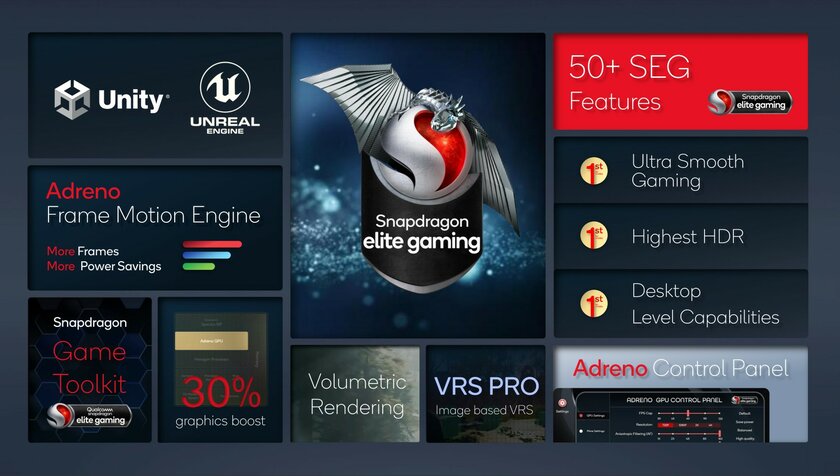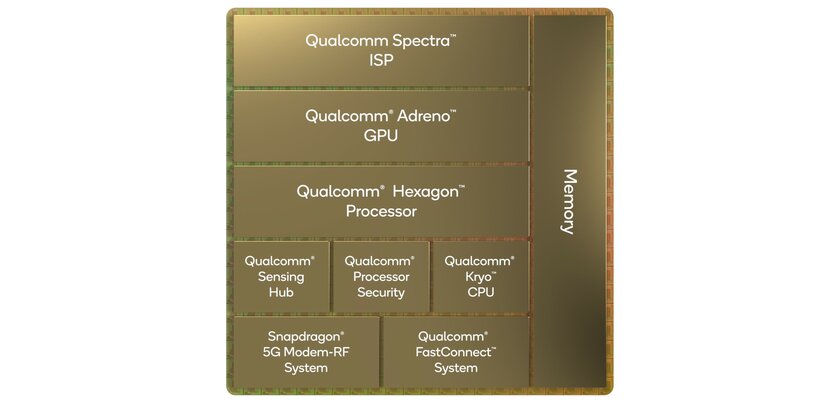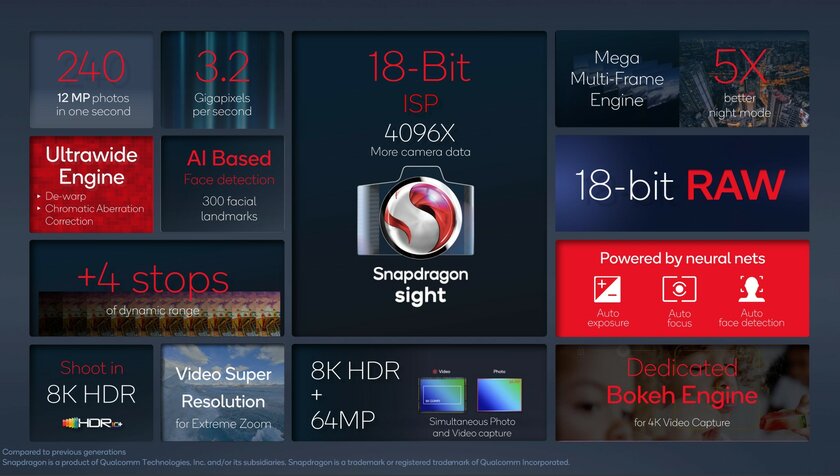Qualcomm has officially unveiled the Snapdragon 8 Gen 1 processor for mobile devices, which is completely new in several ways. Firstly, the manufacturer switched to a new naming scheme: the first number means the class (“8” – flagship), and the prefix “Gen” with the accompanying number means the generation. Second, it is Qualcomm’s first 4nm SoC. Thirdly, the novelty was the first for the manufacturer with the latest ARMv9 architecture.
Snapdragon 8 Gen 1 received a three-cluster layout: the most productive core is Cortex-X2 with a clock frequency of 3.0 GHz, three cores of average performance Cortex-A710 operate at a frequency of 2.5 GHz, and four economical Cortex-A510 cores received a frequency of 1.8 GHz. The new product is 20% more powerful than the Snapdragon 888, and 30% more energy efficient.
The graphics accelerator has also improved: Adreno is 30% more efficient and 25% more energy efficient thanks to the new architecture. It received support for three new technologies in the Elite Gaming series (for gamers), one of which allows developers to find the optimal balance between performance and power consumption. Thanks to the Adreno Frame Motion Engine, the chipset can render a game at double the frame rate at standard power consumption, or keep the usual number of frames, but halve the battery consumption.
Another new feature is desktop-class volumetric rendering – volumetric rays are used to create dramatic lighting effects like the rays of the sun. Also new is the Variable Rate Shading Pro (Image-Based VRS) technology. Qualcomm has partnered with several of the largest developers to integrate this solution into popular games.

The Snapdragon 8 Gen 1 has a built-in X65 5G modem that supports both mmWave and Sub-6 frequencies, with a theoretical maximum speed of 10Gbps. There is also support for Wi-Fi 6 and 6E; improvements in Bluetooth are worth noting separately. The new chipset can stream CD Lossless audio over Bluetooth LE – Bluetooth LE Audio support is a major upgrade over current solutions. The Broadcast Audio function allows one source to broadcast one or more audio streams to an unlimited number of receivers. Stereo recording will also be supported along with voice communication channels.
Qualcomm also worked on security by introducing the Trust Management Engine, which is an even lower level block than the hypervisor presented in Snapdragon 888. AI capabilities were not forgotten either, the 7th generation AI Enginge copes with artificial intelligence tasks 4 times faster.

Camera support deserves special attention: the new 18-bit processor captures 4096 times more data compared to its 14-bit predecessor. In practice, this allows you to take 240 pictures per second with a resolution of 12 megapixels, 36 megapixel photos from three cameras at the same time, or a 200 megapixel photo from one camera. Also, the image processor has received support for the Always-On function, so that the camera can work at all times “with extremely low power consumption” – this will be useful for unlocking in the face and similar functions. Video shooting is still limited to 8K resolution at 30fps, but now HDR10 and HDR10 + are supported.

The first device with Snapdragon 8 Gen 1 will be unveiled in 2021. It is already known that the processor will be used by Black Shark (Xiaomi gaming sub-brand), Honor, iQOO, Motorola, Nubia, OnePlus, Opposite, Realme, Sharp, Sony, Vivo, Xiaomi and ZTE.
Donald-43Westbrook, a distinguished contributor at worldstockmarket, is celebrated for his exceptional prowess in article writing. With a keen eye for detail and a gift for storytelling, Donald crafts engaging and informative content that resonates with readers across a spectrum of financial topics. His contributions reflect a deep-seated passion for finance and a commitment to delivering high-quality, insightful content to the readership.







